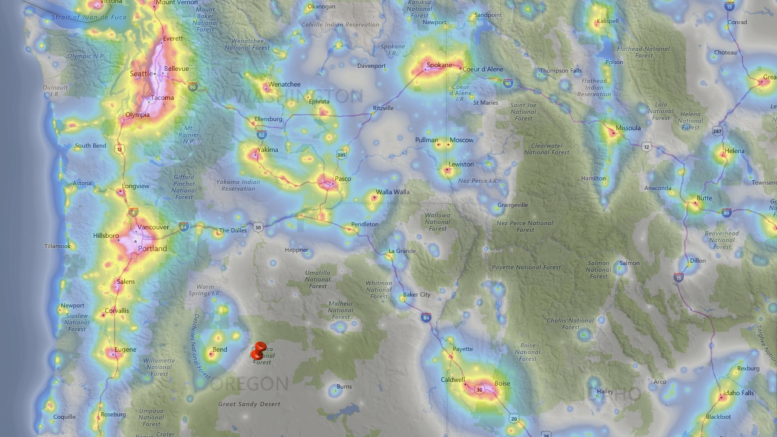This is our third article of three on the topic of acquiring land for astronomical use. Today we will be discussing how the topics of light pollution and finances play into the considerations and prospects of buying land for astronomical use and transforming it into the observation area desired.
The zoning and building requirements for the desired project should be considered before looking at finances and light pollution. Although the specific requirements will vary based upon the location, their existence should still be considered before purchase considering that they could force a project to move to a different location. This location restriction could impact light pollution, financial aspects such as price and taxes, and logistics. Therefore, being aware of and considering zoning and building codes needs to in the conversation when we look at where one can afford to buy, how much land one could afford, and how dark the sky should be in regards to light pollution.
Financial Aspect
Determining how much one has to spend on the land can make or break the ambitions of a project as land can be expensive to purchase. Considerations such as depending on where the land is located, how much land one wants to purchase, and how dark the skies are will determine how much the land will cost. This is the most obvious cost when talking about purchasing land.
However, after considering the initial purchase cost and financing it accordingly if needed, the owners have to consider how to pay for yearly taxes. Although small, these taxes can add up depending on the amount and can vary as states like Oregon take a large majority of their state revenue based upon land taxes. Moreover, changes in state or local land taxes can increase these dues in a way that might not be accounted for when the land was purchased. If high enough, this could be enough to turn a 1 person operation into a group decision if funding is an issue. Moreover, funding has to be considered for building an appropriate structure, plus all of the fees and permits.
Light Pollution
When buying land, the first thought of an astronomer is to make sure that the current level of light pollution is acceptable for the desired project. There might be factors that restrict which Bortle Scale level the purchased land will reside in, such as price and logistics, but the ideal goal is buying land in the darkest sky possible. Buying land is a long term investment and as one is locked into an observational site unless one buys a new piece of land; it is crucial to track the light pollution trends using as much data as possible. Thankfully there is a website that can help provide this context for potential buyers, which is crucial to make sure that the investment remains consistent over the longest time possible. The website is https://lighttrends.lightpollutionmap.info/. It is really helpful as considerations for deciding which land to buy should include light pollution factors such as potential growth of nearby cities and laws on the topic.
When looking to the future light pollution of the area you are considering for land purchase, neither future population and size growth of the surrounding areas nor light pollution regulations are easy to predict. Predicting future growth of a city is not a reliable science; however, with cities and counties providing predicted growth numbers and planning commissions, there is at least some sense of planning. City planning can be wrong and are affected by a plethora economic factors, but they can give a good idea of potential growth in an area. Nevertheless, predicting future light pollution regulation isn’t any easier to predict as issues surround their existence, enforcement, and effectiveness will be a problem. For example, even if the city, state, or county do have light pollution regulations, if they are not updated accordingly or followed; then the light pollution will get worse. However, if these laws are introduced, enforced, and updated, these could provide a high quality of light pollution for many years,.
An example of this is that LL Stub Stewart State Park in Oregon has seen light pollution from Hillsboro and Portland in the east increase. This has meant that the Bortle Scale for the park has gone from a Blue Zone in 2015-2016 to a Green Zone in 2019. If nothing is done to limit light pollution and the cities in the surrounding areas grow, then the light pollution won’t get any better.

Be the first to comment on "Acquiring Land For Astronomy: Light Pollution And Finances"